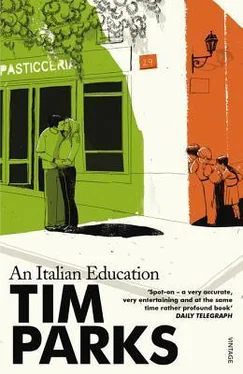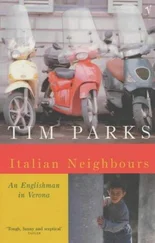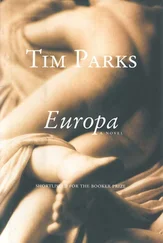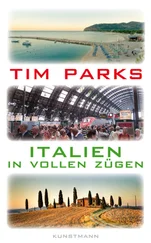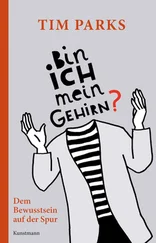In spidery handwriting at the top of the report is the name Elvira Avanzi. ‘That’s me,’ one of the women says, fiddling with reading glasses.
It’s a report to be proud of, and made all the more so by the fact that the fascists substituted the system of grading from one to ten with the more morally loaded system of giudizi — judgments. Thus we have the possibilities of lodevole (praiseworthy), buono (good), then sufficiente (passed by a whisker) then insufficiente (fail).
The entries read:
Lavori manuali, lavori donneschi
–
lodevole
(manual work, women’s work)
Igiene e pulizia della persona
–
lodevole
(hygiene and personal cleanliness)
Nozioni di matematica
–
buono
Nozioni di geografia
–
buono
Religione
–
lodevole
Calligrafia
–
lodevole
Comportamento morale e civile
–
lodevole
(moral and civil behaviour)
But they are laughing, Elvira explains, ‘Because everybody got lodevole for hygiene. You didn’t have to do anything to get lodevole for hygiene. It was automatic. Even when you came from cleaning the chickens. Everybody got it.’ Just like the caretaker’s diploma…
But the certificate display has its darker side, too. To the right of Elvira’s school report, a futuristic design of three boxes springing out from a sheet of grey paper frames the initials ONB, Opera Nazionale Balilla, the fascist movement that organized children at elementary school. Balilla was the nickname for Giovanni Battista Perasso, a boy who in 1746 threw a stone at a group of Austrian soldiers in Genoa, thus sparking off (so they say) an uprising that expelled the Austrians from Liguria. Clearly this was a fine example for the schoolboys of two hundred years later to follow, though quite who they were to throw their stones at must have been unclear at first. Leave Michele alone with his catapult and God knows what uprising might occur.
Attendance of the assemblies of the Opera Nazionale Balilla was obligatory, so that as well as having to deal with two dating systems, children also had to collect two school reports. Underneath Elvira’s lodevoles there are four or five ONB certificates. The graphics are extravagantly 1984 ish, with the words Ministero Educazione Nazionale and Partito Nazionale Fascista featuring portentously in storm-torn skies. Below them, an angel holds sword aloft as she strides across a landscape of planes, tanks and smoking power stations. In the centre of this piece of paper that only fifty years ago was handed out to little children with, on the back, some comment on their ‘performance’ is the single word (in very large capitals), VINCERE, which I suppose one would have to translate as TO VICTORY! I can imagine my Michele being very proud indeed of receiving such a piece of paper. He has been going through a phase recently of drawing the most elaborate weapons of war, frequently mounted on the back of high-performance sports cars.
On a display opposite these old reports is a huge piece of paper with the large, even handwriting of a teacher, offering information that claims to come as the result of research made by the fifth year. It reads as follows:
‘Mens sana in corpore sano,’ said Mussolini and every Saturday morning the children at the Cesare Betteloni school had to come to the playground to do exercises and drills. Often they would prepare shows and take part in competitions.
A black-and-white photograph beside shows the courtyard of the school and the children exercising in their white smocks. A rather attractive young teacher is bending to touch her toes, long dark hair falling forward. The research report continues:
Before being a teacher here, Maestro Ferdinando Ruffo was also a pupil at this school, though he never got a higher grade than sufficiente . The floors were made of wood then and there were smoking stoves in every classroom. The desks were heavy and wooden with fold-down seats and holes for inkwells. Sometimes there were four children to a desk and forty-five to a class, not twenty like today. In 1943 the school was occupied by the Germans in flight. The lessons were stopped. The more fortunate children went to study with the nuns in the nearby village of Olivè. Maestro Ruffo, however, was able to complete his studies thanks to a kind friend of the family who tutored him gratis, and in 1945, when the school reopened, he passed his final elementary school exam.
I’m surprised to hear that the school was occupied by the Germans; I didn’t know that at all. I ask Stefano if he knew, but he didn’t. His family is not from this village. I wonder if it is churlish of me to ask myself whether perhaps the headmistress shouldn’t have mentioned at least in passing how the courtyard we were standing in this morning was once the scene of Mussolini’s Saturday morning exercises, how the school was closed for two of its hundred years as the Germans fought their long and bloody rearguard action up the peninsula. (How discreet that ‘in flight’ is!) Or was this simply so self-evident it didn’t need to be said? Or perhaps there was some passing reference and I missed it in the general chat. But I don’t think so. That was not the tone of the morning at all. The mildly worrying thing about it, if one wishes to worry about these things, is how close in spirit the chanting of Gino d’Arezzo’s poem is to much that went on on those mornings. Doubtless many of the children loved it.
There is a mill of parents and kids round the exhibits, spilling wine and Coke, marvelling at how their village used to be, reminding each other of buildings that have changed, wondering at the old cars that sneak into the corners of the frames, sighing over the pretty children’s smock uniforms that made them all look like choirboys, looking for friends’ school reports amongst the more recent post-war exhibits, where the assessment system, I notice, has now retreated from lodevole, buono , etc., back to plain numbers: Uno, due, tre, quattro, cinque, sex …
‘What’s this sex ?’ I ask Stefano.
‘Six,’ he tells me. ‘The grading was one to ten.’
‘Yes, but I mean why is it written sex instead of sei ?’
Stefano strokes his chin. He has a nice tubby chin and a tubby man’s moustache. But this is one thing he doesn’t know. His brow furrows earnestly. No, he doesn’t know, only remembers that they always wrote it that way.
We ask one or two others. They don’t know. Iacopo doesn’t know. Marta doesn’t know. So I don’t find out about this until I ask Rita later. Rita has a disturbing way of knowing everything. It was sex instead of sei , she explains, because the children could very easily have turned an ‘i’ into a ‘t’ and so transformed sei into sette , before showing the thing to their parents, but with the ‘x’ there it was impossible. Italians do have a way of assuming that one’s planning to cheat…
Elvira, Adelina, Ida, Elvira again, Maggia, Libera… It’s mainly the women who have kept their school reports and brought them along. And what fine old names. Arselide, Egidia, Amalia. Turning my head to where another exhibit lists the names of children in the various classes today, I spy two Thomases, a Michael, a Jessica, and, for Italians, an unpronounceable Hilary. All with local surnames. Alongside the names, a brief history of school-leaving ages and leavers’ accomplishments shows that only two of the forty-four parents of the present fifth year (ten-year olds) went to university while twelve of the twenty-one children wish to go. The present school-leaving age is fourteen.
Читать дальше
